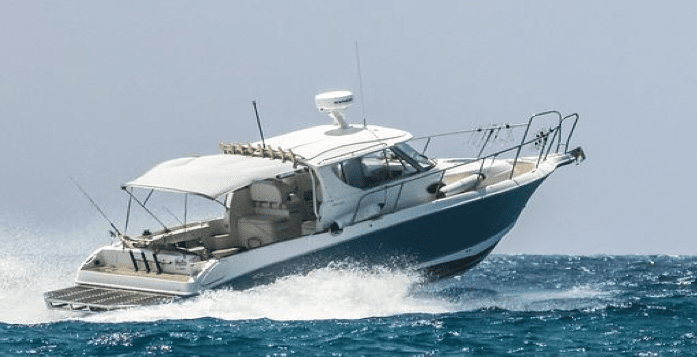Boater safety tips ahead of Memorial Day weekend
It’s official — the boating season starts on Memorial Day, May 27. Here’s some tips for you before taking your vessel crashing over
the waves.
You get the family in the car and go to the marina, but being a responsible boater, first of all you check the weather forecast and make sure that you won’t face any surprises out on the water. You get to the boat and go through the required check-off items: the fuel level, check oil, Nav-lights in order, see that the personal flotation devices are in the right place — at least one per person and easily accessible in an emergency, set up the anchor for easy deployment, flares and other emergency items in order and handheld VHF radio charged and readily available. You will have an up-to-date first aid kit on board. Of course, this is not an exhaustive list.
Assuming you are a responsible boater, the final thing to do before you cast off is to inform the passengers and crew as to where the emergency items are and where and how to don the PFDs. And if you are a diligent boater, you file a float plan with friends, so that in the eventuality you aren’t where you’re supposed to be in the coming days, they can inform the Coast Guard of a potential problem.
All of the above seems like a lot of hard work to go out for a day trip to the local anchorage, but with some experience and perhaps some nasty events you will tend to do these things automatically. Better yet, have an actual check-off list so you forget nothing. Then you’ll have a fine day to go boating.
Added to the above list should be what the Coast Guard teaches — rather preaches — to its boat crews and to the Coast Guard Auxiliary as well:
The USCG boating statistics for the U.S. in 2017 are as follows:
• Fatalities: 658
• Drownings: 449
• Injuries (requiring medical treatment beyond first aid): 2,629
• Boating accidents: 4,291
• Property damage: Approximately $46 million
• Number of registered recreational boats in the U.S.: 11,961,568
Situational awareness, that is, what’s going on around you. In the parlance of the local guru, it’s called mindfulness, or the state of knowing the environment in which your boat plows. These include water state, weather — both now and what’s coming — wind, other boats and buoys, and all the impediments that exist on local waters. It’s important to have a designated lookout in case someone falls overboard.
Above all, know the rules of the road, or the elements that dictate, mainly through common sense, what to do when boats approach one another. This covers a myriad of circumstances in which both professionals and amateurs alike find themselves. These regulations, also known as COLREGS, are devised to avoid collisions at sea. The main elements should be learned either by way of courses given by various authorities, such as the U.S. Coast Guard Auxiliary, or through a variety of books and videos. The Port Jefferson auxiliary gives a Safe Boating Course as well as a course entitled Suddenly in Command, conveying essential know-how when the second-in-command must take over the running of the boat.
You will, of course, have a nautical chart available for the waters in which you wish to sail. The chart, unlike a land road map, gives you broad swaths of safe passages and also tells you which regions to avoid due to shallow depths, rocks and a wide range of impediments. One can navigate using charts — themselves marvels of information collected over years of careful observations by mainly government vessels — your key to safety and enjoyment on the water, whether you’re out for a day or on a longer passage.
If you’re a power boater or a sailor with an accessory motor, you should know something about the innards of the beast. Have you enough fuel for your planned voyage (boats frequently have notoriously inaccurate fuel gauges). Will you check the oil dip-stick, or do you assume that the marina personnel does that for you? Note they won’t unless you ask them to. Are all your oil, water, fuel and water filters clean and can you change-out a clogged filter? Water cooling sea cocks open? Can you troubleshoot easy problems and do you have the essential tools for such work? Most aspects of inboard and outboard motors can be handled by a layman with a little study. A quick course on troubleshooting your power plant by the marina mechanic can really payoff. Don’t forget that emergency “road side” help from Sea Tow or Boat US can save the day.
Paddle craft safety is of growing concern to the Coast Guard, with over 20 million Americans enjoying the sport. According to industry figures, some 100,000 canoes, 350,000 kayaks and an increasingly large number of stand-up paddlers are sold annually. A tragic consequence of these large numbers is that as of 2015, 29 percent of boating deaths were related to paddle craft. In response, the USCG has generated a Paddle Craft Vessel Safety Check, which is administered free by a USCG-approved vessel examiner, such as Coast Guard auxiliary personnel. Paddle crafters should wear PFDs and have a sound producing device, such as a whistle.
Herb Herman is the flotilla staff officer for public affairs, Port Jefferson Auxiliary Flotilla 14-22-06.







